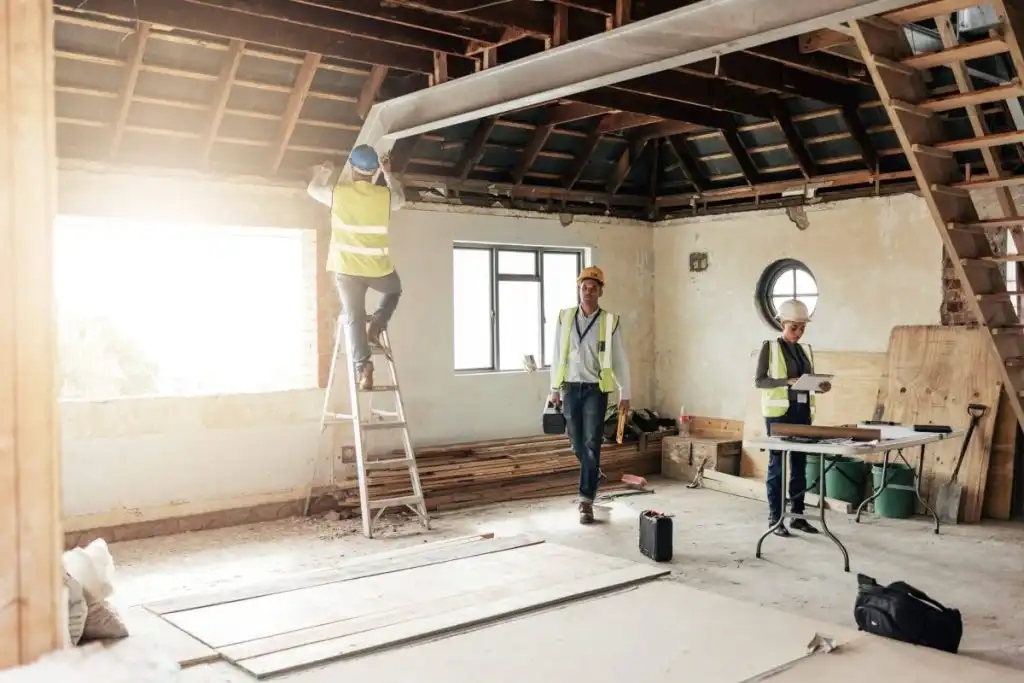Natural disasters can strike when you least expect them, leaving homes damaged and families displaced. Whether it’s a flood, fire, earthquake, or severe storm, the aftermath of such events can be overwhelming. The road to recovery can be long and difficult, but with the right knowledge and resources, it’s possible to restore your home and bring life back to normal. In this blog, we’ll walk you through the essential steps to take when restoring your home after a disaster.
1. Ensure Your Safety First
Before you think about the restoration process, your safety should be your top priority. Make sure that the area is safe to enter. If the disaster involved fire, flooding, or structural damage, it’s crucial to wait for professionals to clear the site before attempting to enter. Always follow the guidance of local authorities, such as firefighters and emergency responders.
2. Assess the Damage
Once you are sure that it’s safe, start assessing the damage to your property. This may involve walking through your home to look for signs of damage to walls, ceilings, floors, furniture, and belongings. You might also need to check for hidden issues such as water leaks, gas leaks, or electrical problems. The earlier you can identify the full scope of the damage, the better prepared you will be to begin the restoration process.
3. Document the Damage for Insurance
Insurance will play a crucial role in your home’s restoration. Take clear, detailed photos and videos of all damages. Make sure to capture every room, including any structural or hidden damage that may not be immediately visible. If possible, create a list of the damaged items, along with their estimated value. This documentation will help expedite your insurance claim process, so it’s important to be thorough.
4. Contact Your Insurance Company
After documenting the damage, contact your insurance company as soon as possible to begin the claims process. Be prepared to provide all the necessary documentation, including photographs and a list of damaged items. Insurance adjusters may need to visit your home to assess the damage themselves. Keep detailed records of all communication with your insurer, including dates, names of representatives, and claim numbers.
5. Secure Temporary Housing (If Needed)
Depending on the severity of the damage, you may need to find temporary housing. Many insurance policies cover temporary living expenses if your home is uninhabitable due to a disaster. Make arrangements for a safe place to stay while restoration work is being completed. This can relieve some of the immediate stress, allowing you to focus on the long-term process of rebuilding.
6. Begin Cleanup and Mitigation
Once your home is safe to enter, the cleanup process begins. This may involve removing debris, water, soot, or mold, depending on the nature of the disaster. Here are some common disaster-specific cleanup steps:
-
Water Damage: For floods or water damage, it’s essential to remove water quickly to prevent mold and mildew. This can be done by using water pumps, fans, and dehumidifiers.
-
Fire Damage: If your home has been affected by fire, removal of charred materials and smoke odors is a top priority. Soot cleanup is a delicate process that requires professional equipment.
-
Mold: If water has entered your home and not been dealt with quickly, mold may begin to grow. Mold can be harmful to your health and should be handled by professionals.
Hiring a professional restoration company is often the best course of action at this stage. They have the tools and expertise to handle complex cleanup situations safely.
7. Hire a Professional Restoration Company
Restoring your home to its pre-disaster condition can be a complex task. Many homeowners underestimate the amount of work involved or attempt DIY repairs, which can lead to further damage or safety risks. A professional restoration company like WSC Construction and Restoration can guide you through the entire restoration process, from debris removal to rebuilding your home.
Professionals have access to specialized equipment and industry knowledge that can ensure the job is done efficiently and safely. From structural repairs to water extraction and fire cleanup, a restoration company can tackle all aspects of the process, allowing you to focus on your family’s recovery.
8. Repair and Rebuild Your Home
Once the cleanup is complete, the rebuilding process can begin. This may involve repairing structural damage, replacing flooring, installing new drywall, and restoring the electrical and plumbing systems. Depending on the severity of the damage, you may also need to replace roofing, windows, or doors.
During this phase, it’s important to work with a contractor who has experience in disaster recovery. They can help you navigate the complexities of rebuilding, ensuring that all repairs are up to code and that your home is restored to its original condition.
9. Prevention and Mitigation for the Future
Once your home has been restored, it’s important to take steps to prevent future damage. You may want to invest in flood barriers, fire-resistant materials, or reinforced roofing to better withstand future disasters. Speak with your contractor about options for improving your home’s resilience to weather events and other potential threats.
In addition, regular maintenance can help catch issues before they become major problems. Periodic inspections and maintenance of plumbing, roofing, and electrical systems can reduce the risk of future damage.
Conclusion
Restoring your home after a disaster is a long and often challenging journey, but with the right approach, it is possible to rebuild and recover. By following these steps and working with experienced professionals, you can bring your home back to life. If you’re dealing with a recent disaster and need expert assistance, contact WSC Construction and Restoration. We specialize in disaster recovery and home restoration, offering comprehensive services that will guide you through the process from start to finish.

